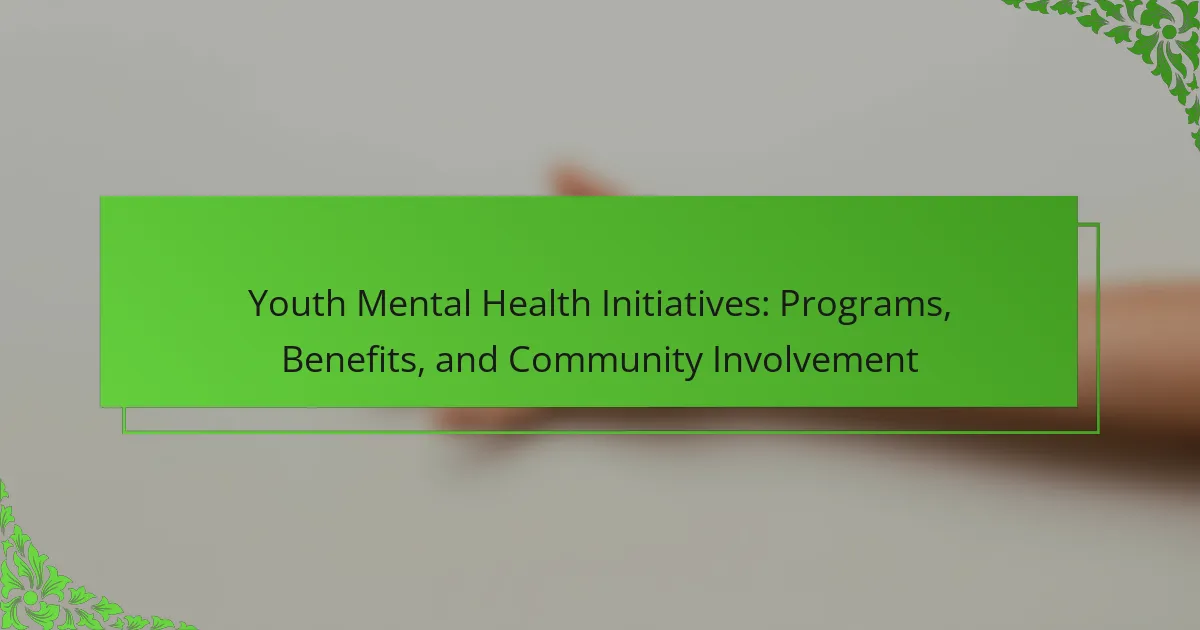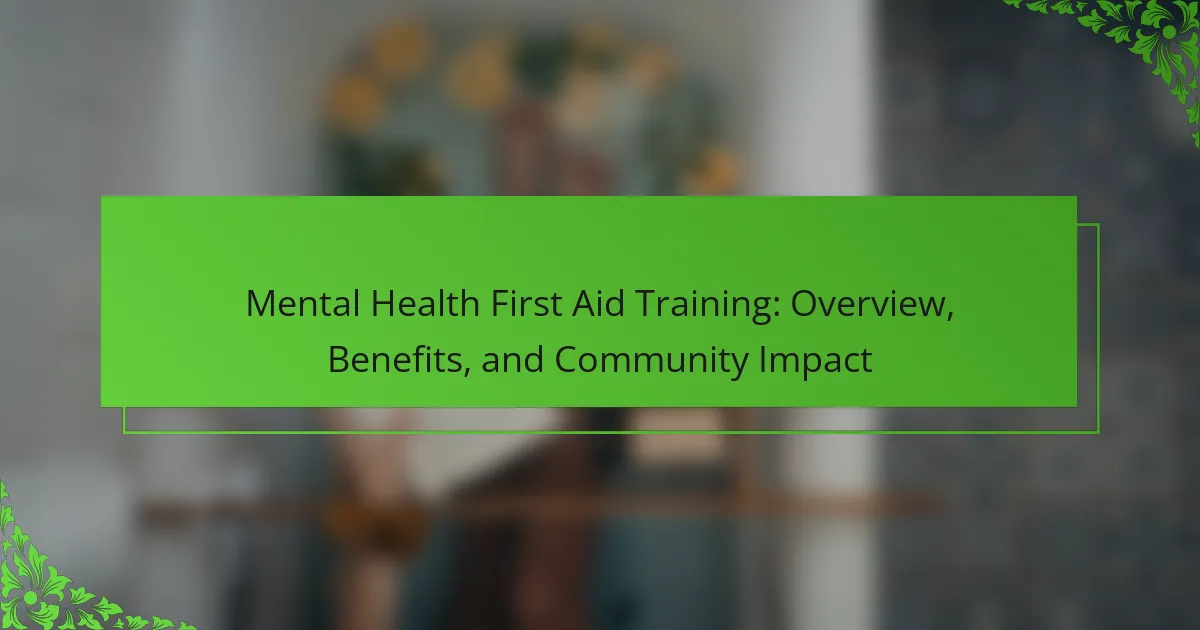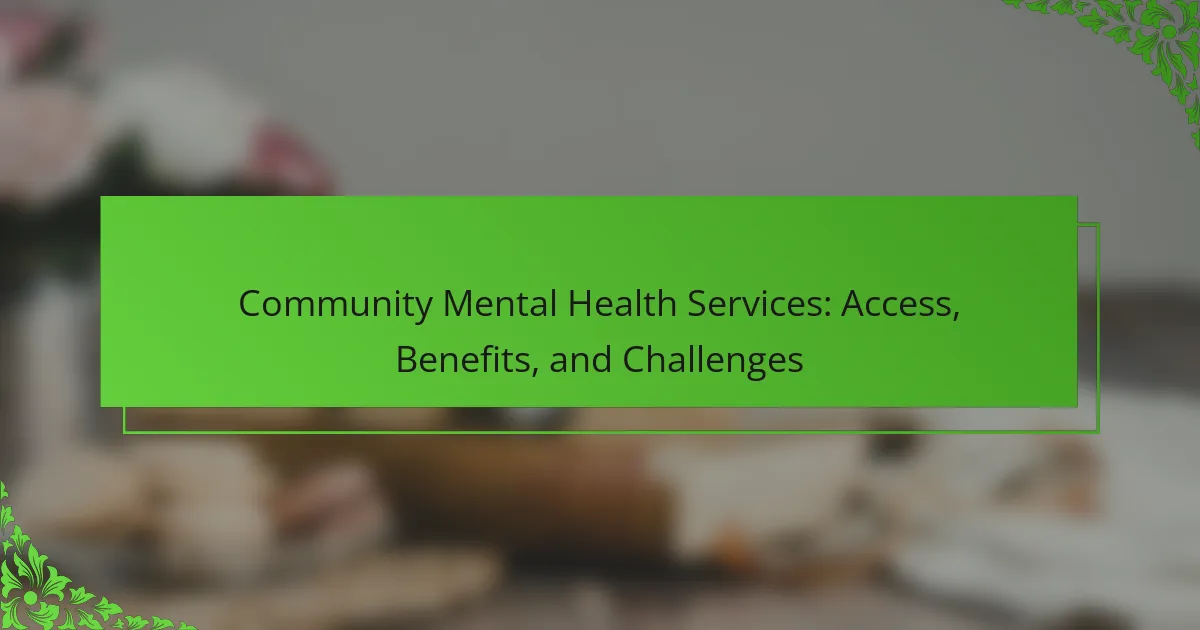Youth mental health initiatives play a crucial role in promoting awareness and providing support to young individuals facing mental health challenges. This article explores various programs that focus on education, community involvement, and emotional support. It highlights the benefits of these initiatives, including improved mental health outcomes and reduced stigma. Additionally, the importance of collaboration among families, schools, and mental health professionals is emphasized to enhance resource availability and foster resilience.
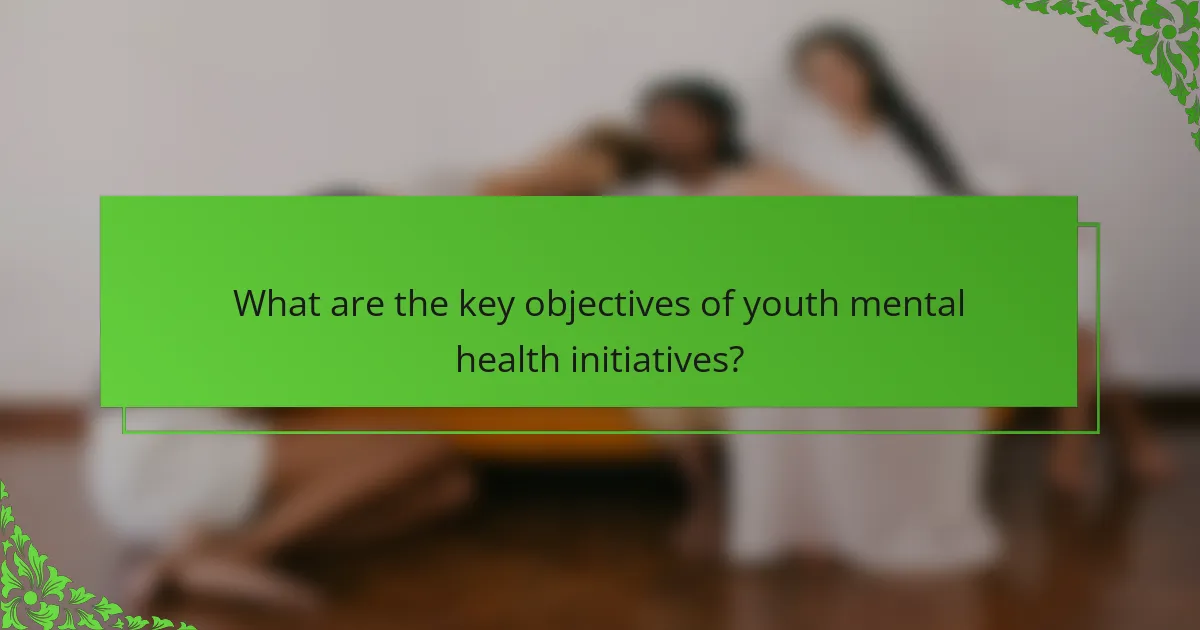
What are the key objectives of youth mental health initiatives?
The key objectives of youth mental health initiatives include promoting awareness, providing support, and fostering resilience. These programs aim to reduce stigma, improve access to mental health services, and encourage community involvement.
Youth mental health initiatives often focus on education, helping young people understand mental health issues. By integrating mental health education into schools, these initiatives empower youth to seek help when needed.
Additionally, these programs emphasize collaboration among stakeholders, including families, schools, and mental health professionals. This collective approach enhances resource availability and creates a supportive environment for youth.
Ultimately, the goal is to equip young individuals with tools and resources to navigate mental health challenges, promoting overall well-being and healthy development.
How do these initiatives support emotional well-being?
Youth mental health initiatives significantly enhance emotional well-being by providing support, resources, and community engagement. These programs reduce stigma, foster connections, and promote resilience among young individuals. For instance, peer support groups offer safe spaces for sharing experiences, while educational workshops equip youth with coping strategies. Community involvement strengthens social networks, creating a sense of belonging that is vital for emotional health. As a result, participants often report increased self-esteem and reduced anxiety levels.
Which populations are primarily targeted by these programs?
Youth mental health initiatives primarily target adolescents and young adults aged 12 to 24. These programs focus on promoting mental well-being, addressing issues like anxiety and depression, and providing resources for coping strategies. Additionally, they often reach underserved populations, including those from low-income backgrounds or marginalized communities. Programs may also engage parents and educators to create a supportive environment for youth mental health.
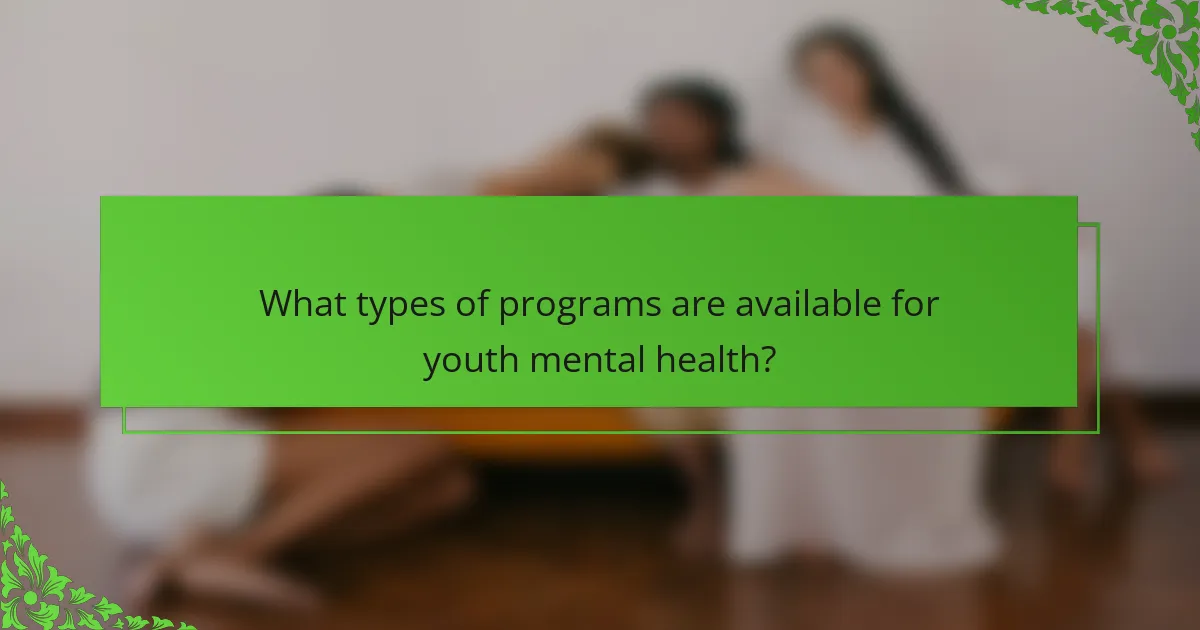
What types of programs are available for youth mental health?
Various programs for youth mental health include school-based initiatives, community outreach, and online resources. These programs aim to provide emotional support, promote mental well-being, and enhance coping skills.
School-based mental health programs offer counseling services and workshops to help students manage stress and anxiety. Community outreach initiatives connect youth with local resources and support groups. Online resources provide accessible information and virtual counseling options, making mental health support more reachable.
Engagement in these programs can lead to improved mental health outcomes, increased awareness, and reduced stigma surrounding mental health issues among youth.
How do school-based mental health programs operate?
School-based mental health programs operate by integrating mental health services into educational settings. They typically involve trained professionals who provide counseling, crisis intervention, and educational workshops.
These programs aim to identify and address mental health issues early, promoting well-being among students. Community involvement enhances program effectiveness, as parents and local organizations support initiatives.
Research shows that such programs can reduce stigma and improve academic performance, making mental health resources accessible to all students. Engaging students in activities fosters resilience and helps develop coping strategies.
What role do community organizations play in mental health initiatives?
Community organizations play a crucial role in youth mental health initiatives by providing support, resources, and advocacy. They facilitate access to mental health services, fostering safe spaces for young people to express their challenges. Programs often include counseling, peer support groups, and educational workshops tailored to youth needs. Collaborations with schools and families enhance outreach and awareness, ensuring that mental health resources reach those in need. By engaging in community involvement, these organizations help reduce stigma and promote mental well-being among youth.
Which digital platforms are utilized for mental health support?
Digital platforms for mental health support include social media, mobile apps, online therapy services, and forums. These platforms offer accessibility, anonymity, and a range of resources for youth. For example, social media can foster community support, while apps provide guided exercises and tracking tools. Online therapy services connect users with licensed professionals, enhancing reach and convenience. Community forums encourage peer interaction, reducing feelings of isolation.
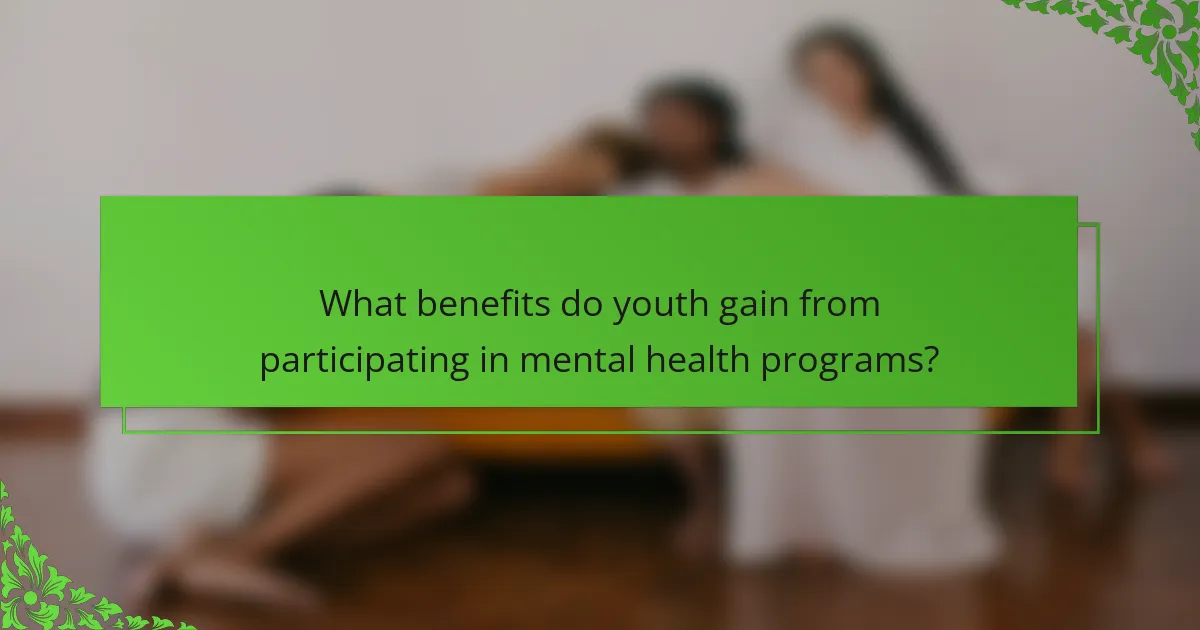
What benefits do youth gain from participating in mental health programs?
Participating in mental health programs provides youth with essential emotional support, coping skills, and improved self-esteem. These initiatives foster resilience, enhance social connections, and promote overall well-being. As a result, youth experience reduced anxiety and depression, leading to healthier lifestyles and academic success. Engaging in community-based programs also encourages a sense of belonging and responsibility, empowering youth to advocate for mental health awareness.
How do these programs improve social skills and peer relationships?
Youth mental health initiatives enhance social skills and peer relationships through structured activities and support systems. These programs foster communication, teamwork, and emotional understanding among participants. For example, group therapy sessions encourage sharing experiences, leading to stronger bonds. Additionally, skill-building workshops teach conflict resolution and empathy, which are essential for positive interactions. As a result, youth develop confidence and resilience, improving their ability to form meaningful connections.
What impact do they have on academic performance?
Youth mental health initiatives significantly enhance academic performance by providing emotional support and coping strategies. These programs reduce anxiety and improve focus, leading to better grades. Community involvement fosters a sense of belonging, further motivating students. Research indicates that schools implementing such initiatives see a 20% increase in student engagement and a notable decline in absenteeism.

How is community involvement critical to the success of these initiatives?
Community involvement is essential for the success of youth mental health initiatives. Engaging local stakeholders fosters trust, enhances resource sharing, and creates tailored programs that address specific community needs. Collaborative efforts lead to increased participation and support, amplifying the impact of mental health initiatives. As a result, communities become more resilient, promoting better mental health outcomes for young individuals.
What strategies can communities adopt to enhance youth mental health?
Communities can enhance youth mental health by implementing targeted initiatives. These include establishing peer support programs, promoting mental health education in schools, and involving families in community workshops.
Peer support programs allow youth to connect with one another, fostering a sense of belonging. Mental health education raises awareness and reduces stigma, equipping young people with coping strategies. Family involvement strengthens support networks, creating a holistic approach to mental wellness.
Additionally, communities can organize recreational activities that promote physical health, which is closely linked to mental well-being. Access to mental health resources, such as counseling services, is crucial for early intervention.
By prioritizing these strategies, communities can create a supportive environment that nurtures youth mental health.
How can parents and caregivers contribute to these efforts?
Parents and caregivers can significantly enhance youth mental health initiatives through active involvement and support. They can participate in community programs, advocate for mental health awareness, and provide a nurturing environment at home.
Engaging in local mental health events fosters connections with professionals and resources. Supporting school mental health programs ensures that youth receive necessary services. Additionally, open communication about mental health at home normalizes discussions and reduces stigma.
Research shows that parental involvement correlates with better mental health outcomes for youth. According to the National Alliance on Mental Illness, youth with supportive caregivers are more likely to seek help when needed.
By collaborating with schools and local organizations, parents can help shape policies that prioritize mental health resources for youth. This collective effort strengthens community support systems and creates a positive impact on overall youth mental health.
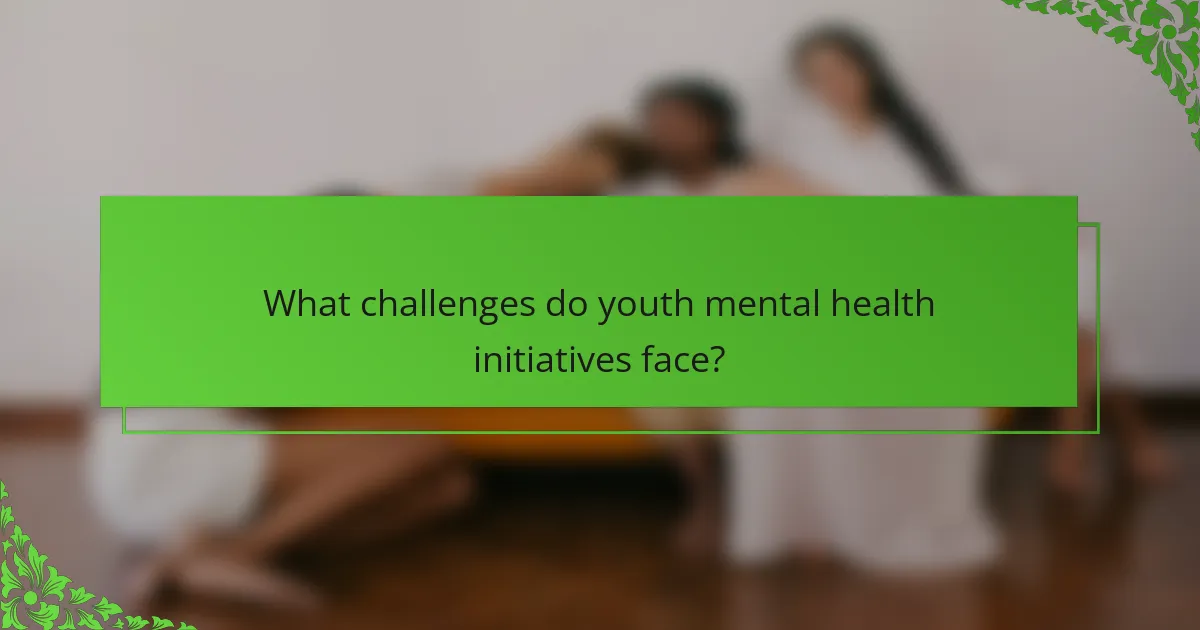
What challenges do youth mental health initiatives face?
Youth mental health initiatives face significant challenges, including stigma, funding limitations, and accessibility issues. Stigma surrounding mental health often prevents young individuals from seeking help. Limited financial resources restrict the development and sustainability of effective programs. Additionally, geographic and socioeconomic barriers hinder access to mental health services, leaving many youth without necessary support.
How do funding limitations affect program sustainability?
Funding limitations significantly hinder the sustainability of youth mental health initiatives. Insufficient financial resources restrict program development, staffing, and outreach efforts. Programs often struggle to maintain consistent services, leading to gaps in support for at-risk youth. As a result, community involvement may dwindle, further jeopardizing program longevity. Sustainable funding models are essential to ensure continuous access to mental health resources for young individuals.
What barriers exist in reaching underserved populations?
Barriers in reaching underserved populations include stigma, lack of resources, and limited access to services. Stigma surrounding mental health prevents individuals from seeking help. Additionally, underserved communities often face insufficient funding and resources for effective programs. Geographic isolation can further limit access to mental health services, leaving many without adequate support.
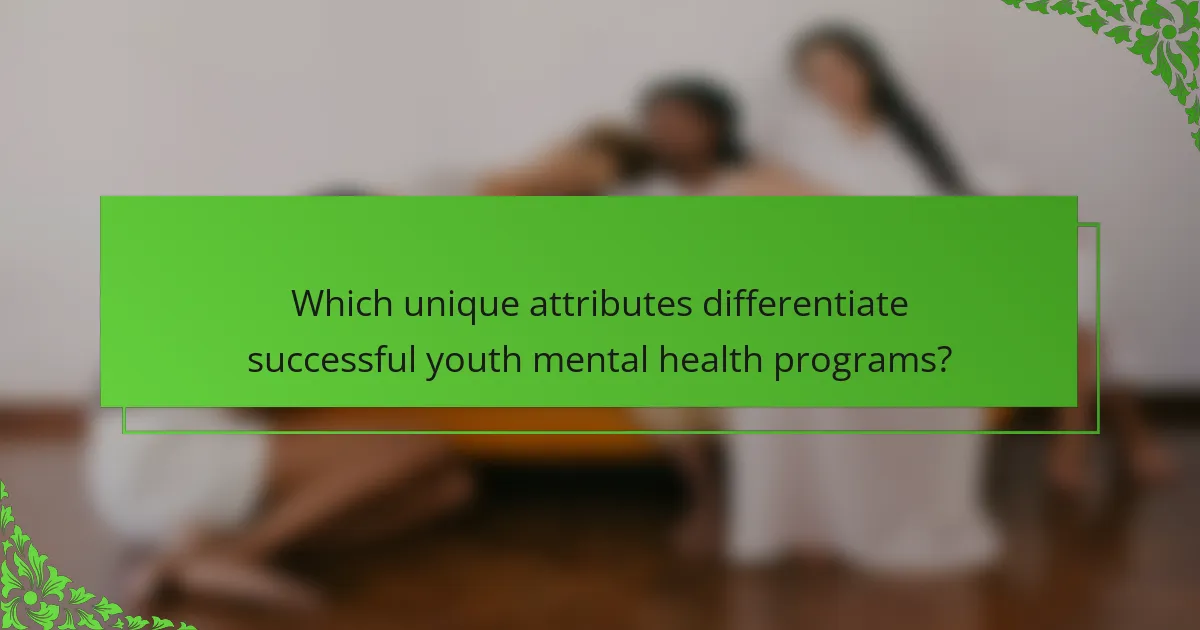
Which unique attributes differentiate successful youth mental health programs?
Successful youth mental health programs are distinguished by their community involvement, accessibility, and evidence-based approaches. These initiatives prioritize youth engagement, allowing participants to shape programs. They also ensure services are culturally relevant and tailored to diverse populations. Additionally, successful programs often integrate mental health education into schools, fostering early intervention. Regular evaluation and adaptation based on feedback enhance their effectiveness.
How do cultural considerations shape program effectiveness?
Cultural considerations significantly enhance the effectiveness of youth mental health initiatives. Programs tailored to specific cultural contexts resonate better with participants, fostering trust and engagement.
Cultural relevance influences the design and delivery of these programs. For example, incorporating local traditions and values can improve participation rates. Community involvement is crucial, as it ensures that initiatives reflect the needs and preferences of the target population.
Furthermore, culturally competent staff can better address the unique challenges faced by diverse youth. This approach leads to improved mental health outcomes and a greater sense of belonging among participants.
Ultimately, integrating cultural considerations into youth mental health initiatives not only boosts effectiveness but also creates a supportive environment for healing and growth.
What innovative approaches have emerged in recent years?
Innovative approaches in youth mental health initiatives include integrated school programs, community-based support networks, and digital mental health tools. These initiatives enhance accessibility and foster collaboration among stakeholders. For example, programs that incorporate peer support have shown increased engagement and positive outcomes. Community involvement amplifies resources, creating a more supportive environment for youth.
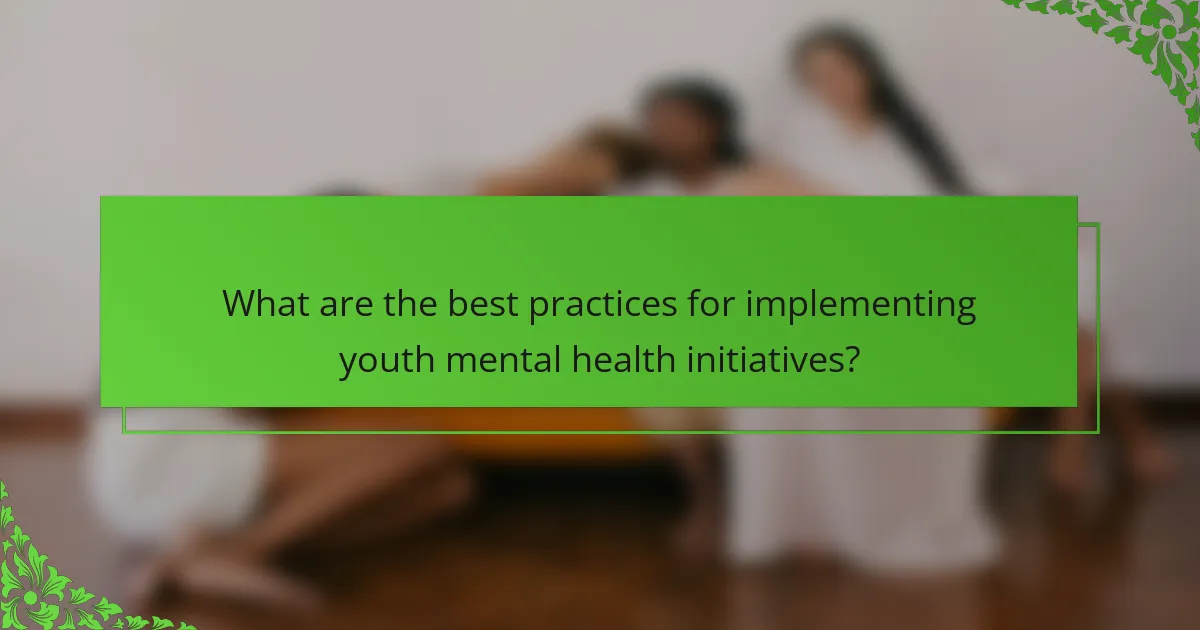
What are the best practices for implementing youth mental health initiatives?
Implementing youth mental health initiatives effectively requires strategic planning and community engagement. Focus on inclusive programs that address diverse needs, promote awareness, and encourage participation.
1. Assess community needs through surveys and focus groups.
2. Develop evidence-based programs tailored to youth demographics.
3. Foster partnerships with schools, healthcare providers, and local organizations.
4. Train staff and volunteers in mental health awareness and support.
5. Promote initiatives through social media and community events.
6. Evaluate program effectiveness regularly and adjust as needed.
These practices enhance accessibility, participation, and overall impact on youth mental health.
How can stakeholders measure the effectiveness of these programs?
Stakeholders can measure the effectiveness of youth mental health initiatives through various metrics. Key indicators include participant feedback, changes in mental health outcomes, and community engagement levels.
1. **Participant Surveys**: Collect qualitative and quantitative data on satisfaction and perceived benefits.
2. **Outcome Assessments**: Use standardized tools to evaluate changes in mental health symptoms.
3. **Engagement Metrics**: Track attendance and participation rates in programs.
4. **Community Feedback**: Gather insights from parents and local organizations on program impact.
5. **Longitudinal Studies**: Assess the long-term effects of initiatives on youth mental health.
These methods provide a comprehensive view of program effectiveness and areas for improvement.
What common mistakes should be avoided in program development?
Common mistakes to avoid in program development include inadequate community engagement, unclear objectives, and insufficient evaluation methods. Engaging stakeholders ensures that initiatives address real needs. Clearly defined goals guide program design and implementation. Regular evaluation helps identify areas for improvement and measure impact.
